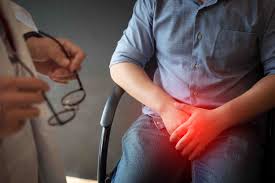

Testicular cancer forms when malignant (cancer) cells develop in the tissues of one or (less commonly) both testicles. Your testicles are two walnut-shaped sex glands that produce sperm and the hormone testosterone. They sit inside a sac of skin that lies below your penis called the scrotum.
Like any cancer, testicle cancer is a serious condition. Fortunately, testicular cancer is highly treatable and curable.
About 90% of all testicular cancer arises from germ cells in your testicles that clump together to form a mass or tumor. Germ cells eventually develop into sperm. Two types of testicular cancer arise from germ cells.
Seminoma: Slow-growing cancer that primarily affects people in their 40s or 50s.
Non-seminoma: Cancer that grows more rapidly than seminomas. It mainly affects people in their late teens, 20s and early 30s. There are four types of non-seminoma tumors. Each is named after the type of germ cell that makes up the tumor. Non-seminoma tumors include embryonal carcinoma, yolk sac carcinoma, choriocarcinoma and teratoma.
Some testicular cancer tumors consist of both seminoma and non-seminoma cells.
The most common sign of testicular cancer is a painless lump in your testicle. Other symptoms include:
Diagnosis also involves cancer staging. Staging provides important information that will guide treatment decisions, such as tumor size and whether the cancer’s spread.
Surgery
Surgery to remove the cancerous testicle is the most common treatment for testicular cancer, regardless of cancer stage or tumor type. In some cases, your provider may also remove your lymph nodes.
Testicular cancer is curable. While a cancer diagnosis is always serious, the good news about testicular cancer is that it is treated successfully in 95% of cases. If treated early, the cure rate rises to 98%.
Testicular cancer can be fatal, but this is rare. Still, early detection makes a big difference in your prognosis. The earlier you see your provider and receive a diagnosis, the greater your chances of being cancer-free.

BEST ONCOLOGIST IN NOIDA
Enquire Now